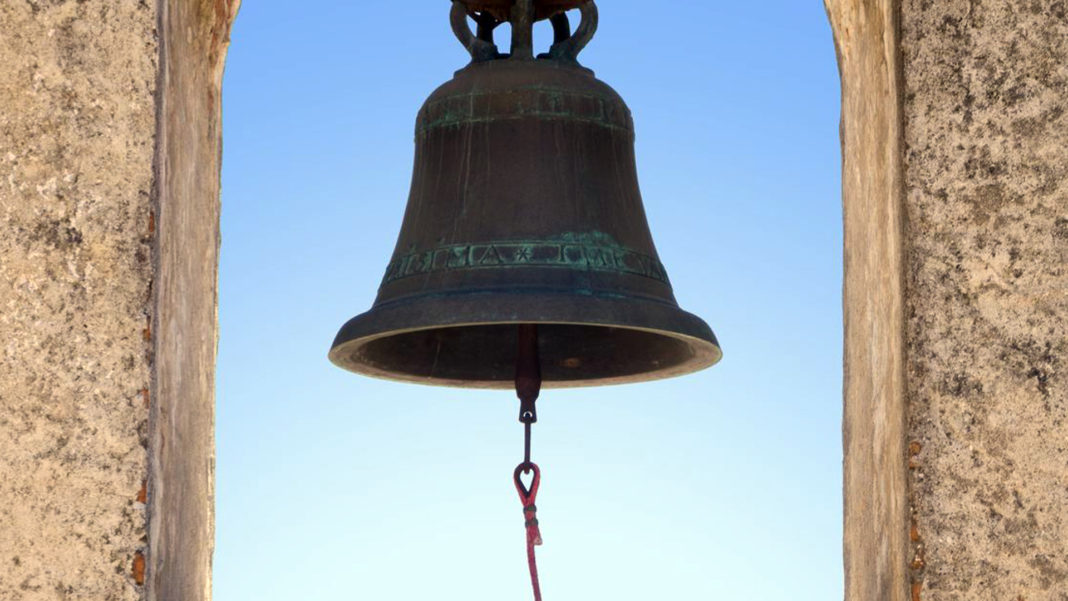By Donal O’Keeffe
“It’s six o’clock on RTÉ1 and we go shortly to Bryan Dobson and Sharon Ní Bheoláin for the Six One News, but first we pause for the new-look Angelus.”
On your screen, sunlight sparkles on water, breaking through leaves as the picture pans to a church steeple and then:
Bong
The image changes to an iconic B&W photograph of an elderly man leering at the camera.
A caption begins to scroll across the screen.
Fr Brendan Smyth – 8 June 1927 – 22 August 1997
Bong
John Gerard Smyth was born in Belfast and in 1945 he changed his name to Brendan when he was ordained a member of the Norbertine Order.
Bong
Father Brendan Smyth would in time become nationally and internationally infamous, a monster who would enjoy a fifty year career as a serial and horrifyingly prolific paedophile.
Bong
Father Brendan Smyth’s crimes destroyed untold thousands of lives, eventually bringing down a government and damaging fatally the authority of the Catholic Church in Ireland.
Bong
Father Brendan Smyth’s colleagues in the Norbertine Order knew of his crimes at least as early as the late 1960s and did not report him to either the Garda Siochana or the Royal Ulster Constabulary.
As abuse allegations arose, the Norbertines moved Smyth from parish to parish, from diocese to diocese and from jurisdiction to jurisdiction. Moving Smyth to fresh hunting grounds, the Norbertines neglected to inform local bishops that they were sending them a notorious child-rapist.
Bong
In 1975, Father Sean Brady, later Cardinal and Archbishop of Armagh, acted as a witness as two teenage boys – victims of Father Brendan Smyth – were forced to sign oaths of silence in a Church inquiry. The boys’ evidence was never forwarded to the RUC or the Garda Siochana and Smyth continued his trail of abuse for another two decades.
Bong
We know that in America, Smyth abused children from Rhode Island, from Boston and from Nebraska. It is tempting to add the phrase ‘and all points between’. We know that Smyth was accused of the sexual abuse of children in Wales and Italy. We know that in Ireland, Smyth – by his own admission – abused literally hundreds of children.
Bong
Smyth’s abuse of four siblings in Belfast led to his eventual arrest in 1991, after which he fled to the Republic. Smyth spent the next three years on the run, mostly hiding out in the Norbertine Abbey in Kilnacrott, Ballyjamesduff, Co Cavan.
When it came to light that the Attorney General’s office had mishandled an RUC request for Smyth’s extradition, further delaying Smyth’s eventual trial, relations in the Fianna Fáil / Labour coalition government – already strained – worsened beyond recovery and the government fell.
Bong
Father Brendan Smyth died of a heart attack in prison in 1997, seventy years old, just one month into a twelve year jail sentence.
Bong
Father Brendan Smyth was buried in Kilnacrott at night by the Norbertines, and they had his grave covered in concrete. This was done to prevent vandalism, they said, but the imagery is striking. In earlier times, such actions might have been undertaken to prevent a monster from rising again. Even in 1997 – twenty years ago – the symbolism was obvious.
Bong
In 2005, a woman identified only as “Samantha” – one of Smyth’s victims – campaigned successfully to have the word “Reverend” removed from Smyth’s gravestone.
Bong
The Angelus has aired on RTÉ television every day at 6pm since 1962 (and at midday and 6pm on RTÉ radio) and is one of RTÉ’s longest running programmes. RTÉ has long said it considers The Angelus a part of its religious programming.
Bong
Some would say The Angelus is nothing short of an advertisement for the Catholic Church and a Catholic Call to Prayer. If this really is the case, then it could be argued that the Catholic Church owes the State broadcaster – and by extension the Irish citizen – for 54 years’ worth of unpaid advertising.
Bong
Were the Catholic Church to pay RTÉ the going advertising rate, Trinity finance professor Brian Lucey estimates The Angelus would cost in the region of €4.8 million per annum.
Over 54 years, that’s somewhere in the region of €259,200,200.
Mind you, that’s just conjecture. As things stand, the Irish State has had little luck in getting the Catholic Church to pay the bills it really does genuinely owe.
Bong
In 2002, the then Minister for Education, Dr Michael Woods, signed (on our behalf) an indemnification deal with 18 Catholic religious orders which had ran residential facilities and which were facing legal actions for abuse allegations.
Woods’ deal capped the orders’ liability at €128 million.
A year later, Woods claimed that his strong Catholic faith had made him the best person to broker the redress deal. He went on to strongly deny that he was a member of Opus Dei, as the group Survivors of Child Abuse had alleged.
After the Ryan report was published in 2009, the religious congregations agreed to pay more, offering cash and property valued at €353m. Much of that property consisted of playing fields attached to schools.
This offer was reduced to €226m in September of 2015.
Bong
This month, the Comptroller and Auditor General reported that only €85m of that €226m has been received by the State.
So far, religious orders have contributed just 13% of the €1.5 billion it has already cost to operate the child abuse inquiry and redress scheme to support survivors of residential abuse.
Bong
Tomorrow, Father Seán Fortune.
Bong








